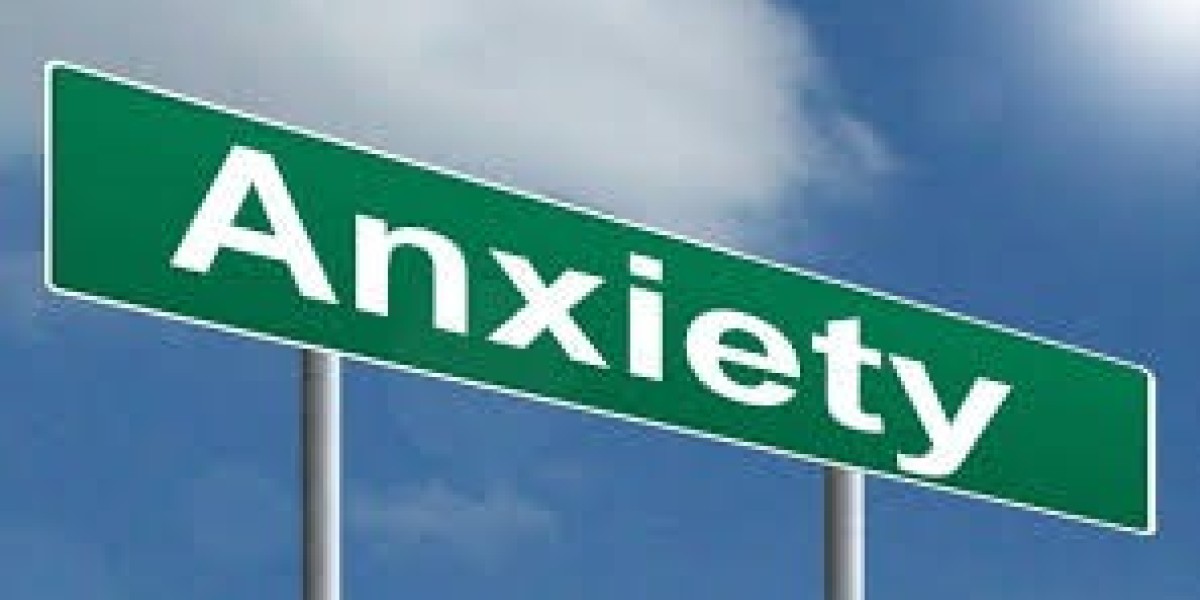Anxiety disorders are a major global public health concern that impact millions of people. Even though they are common, anxiety disorders are frequently stigmatized and misunderstood. We seek to unravel the enigmas of anxiety disorders in this extensive essay by exploring their different subtypes, underlying causes, symptoms, diagnostic standards, and therapeutic modalities. By explaining anxiety disorders, we hope to raise awareness, promote comprehension, and motivate people to get the care and assistance they need for these difficult conditions.
Knowing About Disorders of Anxiety
Anxiety disorders are a wide range of mental health illnesses marked by excessive anxiety, worry, and trepidation. These conditions can take on several forms, such as panic disorder, social anxiety disorder (SAD), generalized anxiety disorder (GAD), certain phobias, and others. Even though every subtype has its own distinct characteristics, they are all characterized by elevated arousal and discomfort in reaction to perceived threats.
Anxiety Disorder Types
The hallmark of generalized anxiety disorder (GAD) is excessive and ongoing worry over a variety of life's circumstances, including job, health, relationships, and finances. Chronic anxiety that is difficult to manage is a common symptom of Generalized Anxiety Disorder (GAD), which significantly impairs daily functioning.
Recurrent and unplanned panic attacks, which are abrupt bursts of extreme anxiety or discomfort accompanied by physical symptoms including sweating, trembling, heart palpitations, and shortness of breath, are the hallmark of panic disorder. Debilitating panic attacks can increase one's worry of having another one in the future.
Social Anxiety Disorder (SAD):
Often referred to as social phobia, SAD is characterized by a severe dread of being seen by others and social situations. Social anxiety disorder (SAD) can cause extreme self-consciousness, dread of shame or embarrassment, and avoidance of social situations, which can deteriorate relationships and cause social isolation.
Irrational and severe fears of certain things, circumstances, or activities—such as heights, spiders, flying, or confined spaces—are the hallmarks of specific phobias. These anxieties can lead to severe anxiety and avoidance behaviors that negatively impact everyday functioning and quality of life.
obsessive-compulsive disorder
OCD stands for obsessive-compulsive disorder. Although it is not included in the DSM-5 classification of anxiety disorders, OCD is characterized by the presence of obsessions, which are unwelcome and intrusive thoughts, and compulsions, which are repetitive actions or mental acts carried out to reduce anxiety. OCD can induce distressing rituals that take a lot of time, as well as considerably limit functioning.
Anxiety Disorder Causes
A complex combination of genetic, environmental, biochemical, and psychological factors influences the development of anxiety disorders. Although the precise reason may differ from person to person, the following factors are frequently involved:
Genetic Predisposition:
Studies indicate that those who have a family history of anxiety disorders are more likely to experience these problems themselves. Because genetic variables affect brain circuitry involved in fear and stress reactions as well as neurotransmitter function, they significantly contribute to an individual's susceptibility to anxiety disorders.
Brain Chemistry and Structure
The etiology of anxiety disorders has been linked to imbalances in neurotransmitters, including gamma-aminobutyric acid (GABA), serotonin, and dopamine. Furthermore, these illnesses may arise as a result of anomalies in brain regions such the prefrontal cortex, hippocampus, and amygdala.
Environmental Stressors:
Adversity in childhood, long-term stress, traumatic life events, and environmental variables can all dramatically raise the incidence of anxiety disorders. Adverse events can interfere with a person's normal psychological development and hasten the onset of anxiety symptoms. Examples of these events include abuse, neglect, parental separation, or loss.
Personality Qualities:
An elevated risk of anxiety disorders has been linked to a number of personality qualities, including neuroticism, perfectionism, and low self-esteem. These characteristics may make a person more sensitive to stressors and more likely to see circumstances as dangerous or threatening, which increases their risk of developing anxiety symptoms.
Psychological Factors:
The persistence of anxiety disorders is facilitated by maladaptive thought patterns, cognitive biases, and dysfunctional coping mechanisms. Rehab is hampered by avoidance habits, excessive worry about the future, and negative self-perceptions that exacerbate anxiety symptoms.
Anxiety Disorder Symptoms
The exact subtype and personal traits of anxiety disorders can have a significant impact on the symptoms. On the other hand, typical symptoms could be:
Excessive anxiety: Uncontrollably persistent anxiety about a range of life issues, including relationships, finances, employment, health, and relationships.
Symptoms in the body:
- Heart palpitations
- Perspiration
- shaky or trembling
- Breathlessness
- Feeling lightheaded or dizzy
- queasy feeling in the stomach
- Tension or pains in the muscles
- Tiredness or agitation
Symptoms of cognition:
- ideas that race
- inability to concentrate
- irrational phobias or fears
- Thinking in catastrophic terms
- Compulsive behaviors or obsessive thoughts
- Behavioral Signs and Symptoms
- Keeping away from stressful circumstances or stimulants
- Social disengagement or seclusion
- Customary actions or obsessions
- lowered productivity in the workplace, classroom, or social activities
Symptoms of the emotions: Severe fear or anxiety
- A sense of dread or impending disaster
- Agitation or irritability
- Having trouble unwinding or resting
- Anxiety Disorder Diagnosis
A comprehensive assessment by a mental health specialist, such as a psychiatrist, psychologist, or licensed therapist, is necessary for the diagnosis of anxiety disorders. Important steps in the diagnosis procedure consist of:
Clinical Interview:
In order to evaluate the kind, length, and intensity of the patient's symptoms as well as any potential contributing factors such stressors or traumas, the clinician conducts a systematic interview.
Medical Evaluation:
To rule out underlying medical disorders or substance-related causes of anxiety symptoms, a physical examination and laboratory testing may be performed.
Psychological Assessment: To determine whether a person has co-occurring mental health disorders, as well as to gauge how well they are able to think and feel, psychological tests and questionnaires may be given.
Diagnostic Criteria:
In order to make an appropriate diagnosis, the doctor looks up the patient's symptoms against the criteria listed in the DSM-5 for different anxiety disorders.
Differential Diagnosis: The doctor distinguishes anxiety disorders from other mental illnesses such obsessive-compulsive disorder (OCD), bipolar disorder, and depression that share symptoms.
Options for Anxiety Disorder Treatment
A combination of psychotherapy, medicine, and individualized lifestyle modifications is usually the most effective way to treat anxiety disorders. Typical forms of treatment consist of:
Psychotherapy:
For anxiety disorders, cognitive-behavioral therapy, or CBT, is the most effective treatment option. Through exposure therapy, cognitive behavioral therapy (CBT) assists people in recognizing and challenging maladaptive thought patterns and behaviors, creating coping mechanisms, and gradually facing their fears.
Medication:
To treat anxiety symptoms, doctors often prescribe antidepressants, especially selective serotonin reuptake inhibitors (SSRIs) and serotonin-norepinephrine reuptake inhibitors (SNRIs). While benzodiazepines can be used temporarily to treat acute symptoms, their long-term usage is restricted because of the possibility of tolerance, dependency, and withdrawal.
Techniques for Relaxation and Mindfulness:
People can lessen physiological arousal and improve their ability to handle stress by practicing mindfulness meditation, progressive muscle relaxation, deep breathing exercises, and other relaxation methods.
Lifestyle Modifications:
Anxiety disorder treatment must include regular exercise, enough sleep, a nutritious diet, and stress-reduction methods. Reducing alcohol intake, limiting caffeine intake, interacting with supportive people, and abstaining from illegal substances and alcohol can all help alleviate symptoms.
Support Groups:
People with anxiety disorders can connect with people who have experienced similar things, exchange coping mechanisms, and get encouragement and validation from peer support groups and online forums.
In summary
In summary, anxiety disorders constitute a serious mental health issue that necessitates a comprehensive approach to both diagnosis and treatment. By simplifying the complexity of anxiety disorders, we may lower stigma, raise awareness, encourage early diagnosis, and develop practical management techniques. Prioritizing mental health education, resources, and support is crucial for people, families, communities, and policymakers to tackle the prevalence of anxiety disorders and enhance the general welfare of those impacted. By working together, we can understand anxiety disorders and create a society that is more understanding and caring.








